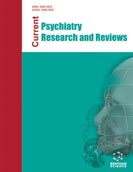Abstract
Anxiety disorders are among the most prevalent and most functionally impairing psychiatric problems experienced by the population. Both pharmacological and psychological evidencebased treatments exist for a number of specific disorders, but may fail to fully relieve symptoms, pointing to the need for additional treatment options. Often considered to be part of the “third wave” of cognitive-behavioral therapies, treatments incorporating mindfulness have emerged in the past two decades as increasingly popular with clinicians and frequently sought out by consumers. The present article reviews the extant literature regarding the efficacy and effectiveness of mindfulnessbased treatments for anxiety, worry, and related problems. Although they have not attained the solid empirical status of CBT or certain pharmacological treatments, the extant research shows mindfulness- based interventions appear to be a promising and useful treatment for people suffering from anxiety and worry. Further work should be done, levels 3-5 of the NIH stage model to determine whether or not they should be further implemented.
Keywords: Mindfulness, mindfulness-based cognitive therapy, third wave, anxiety, pharmacological treatments, conventional.
[http://dx.doi.org/10.1177/1745691617709589] [PMID: 29016274]
[http://dx.doi.org/10.1002/da.20633] [PMID: 19957279]
[http://dx.doi.org/10.1001/archpsyc.62.6.593]
[http://dx.doi.org/10.1002/mpr.1359] [PMID: 22865617]
[http://dx.doi.org/10.1017/S003329171200147X]
[http://dx.doi.org/10.1016/j.janxdis.2009.07.011] [PMID: 19640675]
[http://dx.doi.org/10.1016/j.cpr.2007.01.015] [PMID: 17343963]
[http://dx.doi.org/10.1007/s00127-007-0299-4] [PMID: 18084686]
[http://dx.doi.org/10.1016/S0022-3999(03)00019-9] [PMID: 14642979]
[http://dx.doi.org/10.1007/s00127-012-0496-7] [PMID: 22434047]
[http://dx.doi.org/10.7326/0003-4819-146-5-200703060-00004] [PMID: 17339617]
[http://dx.doi.org/10.1111/j.1440-1819.2012.02405.x] [PMID: 23331287]
[http://dx.doi.org/10.1037/0882-7974.15.2.232] [PMID: 10879578]
[PMID: 27849314]
[http://dx.doi.org/10.1186/1471-244X-14-128] [PMID: 24886240]
[http://dx.doi.org/10.1002/da.22250] [PMID: 24577995]
[PMID: 28867934]
[http://dx.doi.org/10.1016/j.psc.2010.04.002] [PMID: 20599133]
[http://dx.doi.org/10.4088/JCP.v69n0415] [PMID: 18363421]
[http://dx.doi.org/10.1111/j.1600-0447.2004.00433.x] [PMID: 15636594]
[PMID: 18188443]
[http://dx.doi.org/10.1002/da.20694] [PMID: 20455248]
[http://dx.doi.org/10.1007/s11126-010-9123-5] [PMID: 20131095]
[http://dx.doi.org/10.1176/ps.2007.58.3.357] [PMID: 17325109]
[http://dx.doi.org/10.1002/da.20620] [PMID: 19960488]
[http://dx.doi.org/10.1017/S0033291710002291] [PMID: 21134315]
[http://dx.doi.org/10.1016/j.janxdis.2012.02.009] [PMID: 22410094]
[http://dx.doi.org/10.1186/1471-244X-10-113] [PMID: 21192795]
[http://dx.doi.org/10.1007/s00127-006-0047-1] [PMID: 16565918]
[http://dx.doi.org/10.1176/appi.ajp.157.4.521] [PMID: 10739410]
[http://dx.doi.org/10.1080/07448481.2015.1015024] [PMID: 25692661]
[http://dx.doi.org/10.1002/wps.20045] [PMID: 23737410]
[http://dx.doi.org/10.1177/0022146516647098] [PMID: 27251890]
[http://dx.doi.org/10.1093/clipsy.bph077]
[http://dx.doi.org/10.1016/0005-7967(94)E0011-7] [PMID: 7872934]
[http://dx.doi.org/10.1007/s12671-012-0101-x]
[http://dx.doi.org/10.1002/jclp.21865] [PMID: 22623334]
[http://dx.doi.org/10.1111/j.1600-0447.2011.01704.x] [PMID: 21534932]
[http://dx.doi.org/10.1097/01.pra.0000416014.53215.86] [PMID: 22805898]
[http://dx.doi.org/10.1002/jclp.20624] [PMID: 19998425]
[http://dx.doi.org/10.1016/j.eatbeh.2014.01.005] [PMID: 24854804]
[http://dx.doi.org/10.1016/j.brat.2013.01.003] [PMID: 23419887]
[http://dx.doi.org/10.1037/ccp0000092] [PMID: 26950097]
[http://dx.doi.org/10.1111/j.2044-8260.2011.02024.x] [PMID: 22803933]
[http://dx.doi.org/10.1001/jamainternmed.2013.13018] [PMID: 24395196]
[http://dx.doi.org/10.1037/a0038305] [PMID: 25403015]
[http://dx.doi.org/10.1891/0889-8391.26.3.270]
[http://dx.doi.org/10.1037/a0035212]
[http://dx.doi.org/10.1016/j.jad.2017.01.027] [PMID: 28157552]
[http://dx.doi.org/10.1016/j.jbtep.2015.04.001] [PMID: 25912677]
[http://dx.doi.org/10.1016/j.cpr.2016.10.011] [PMID: 27835764]
[http://dx.doi.org/10.1037/h0100962]
[http://dx.doi.org/10.1016/j.cpr.2013.05.005] [PMID: 23796855]
[http://dx.doi.org/10.1016/j.brat.2013.04.004] [PMID: 23747582]
[http://dx.doi.org/10.1093/med:psych/9780195311402.001.0001]
[http://dx.doi.org/10.2174/1874220301401010066] [PMID: 27057260]
[http://dx.doi.org/10.1016/j.brat.2013.06.003] [PMID: 23872699]
[http://dx.doi.org/10.1016/j.cpr.2014.01.001] [PMID: 24487343]
[http://dx.doi.org/10.1007/s12671-017-0761-7] [PMID: 29387266]
[http://dx.doi.org/10.1016/j.ijhcs.2015.09.004]
[http://dx.doi.org/10.1007/s12671-016-0548-2] [PMID: 27642370]
[http://dx.doi.org/10.1016/j.pmedr.2016.11.013] [PMID: 28050336]
[http://dx.doi.org/10.1177/0145445506294083] [PMID: 17050772]
[http://dx.doi.org/10.1007/s10902-014-9589-1]
[http://dx.doi.org/10.1177/2167702613497932] [PMID: 25821658]
[http://dx.doi.org/10.1037/a0039589] [PMID: 26436311]











